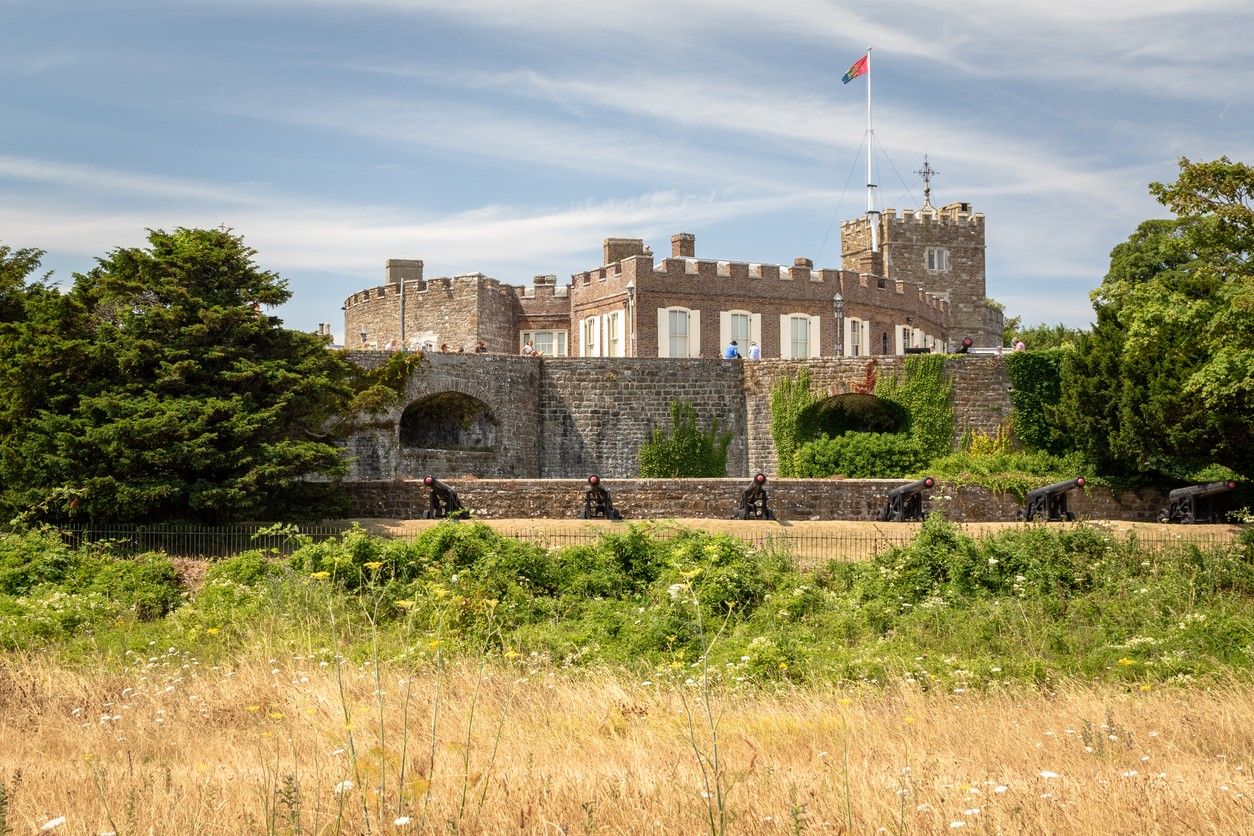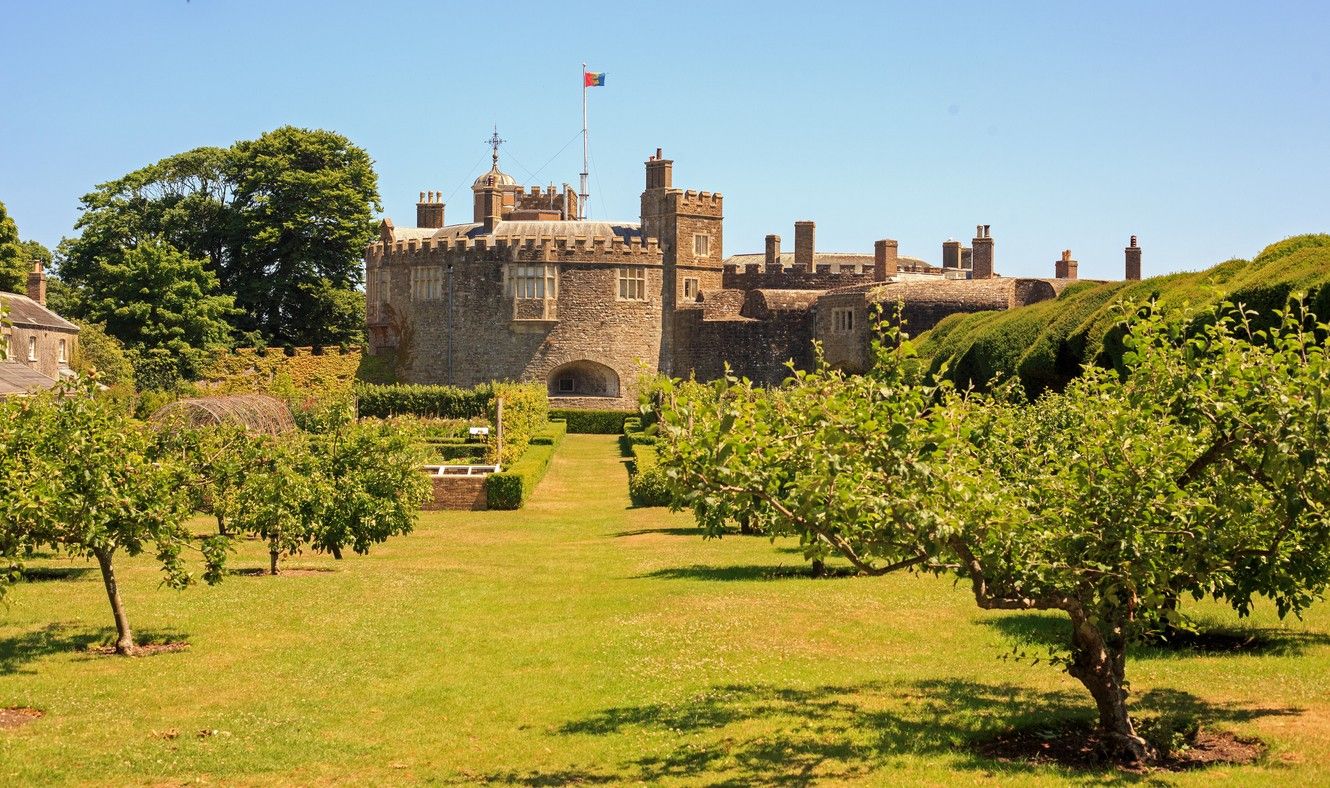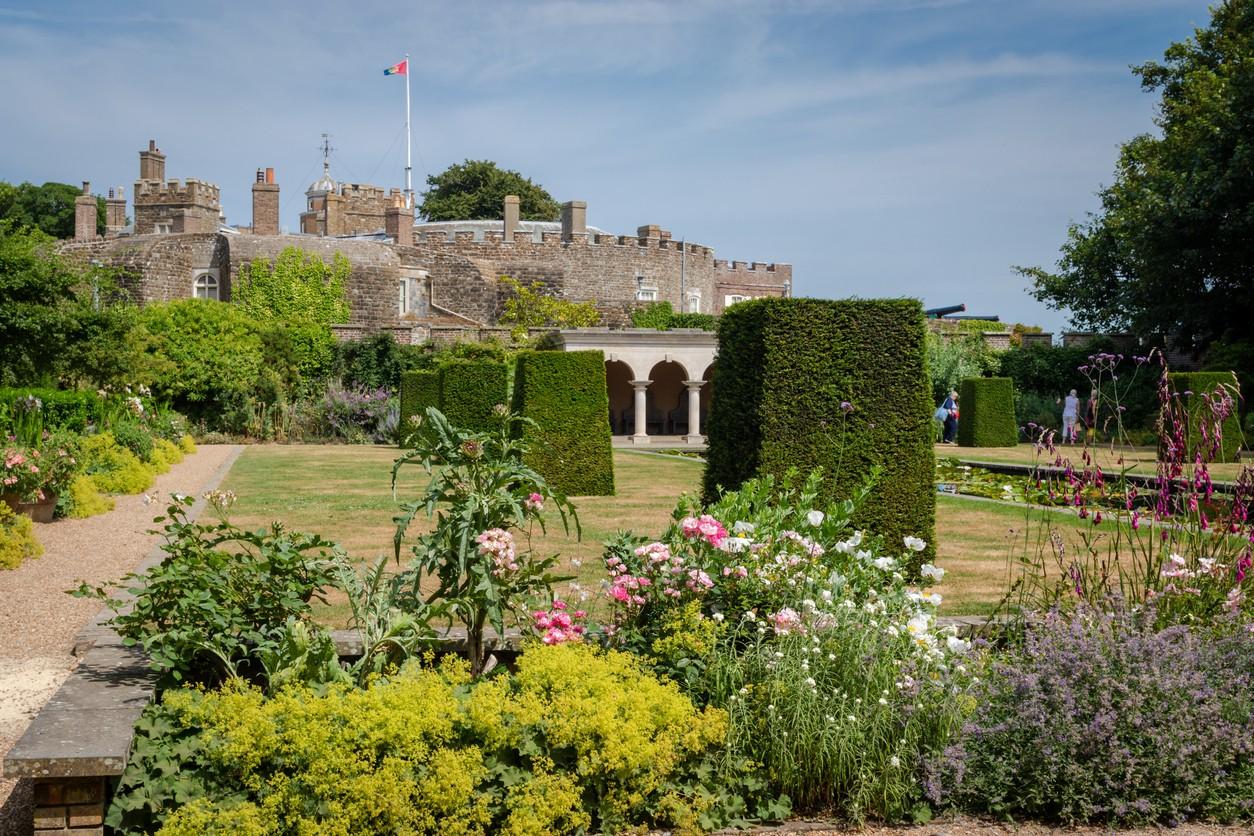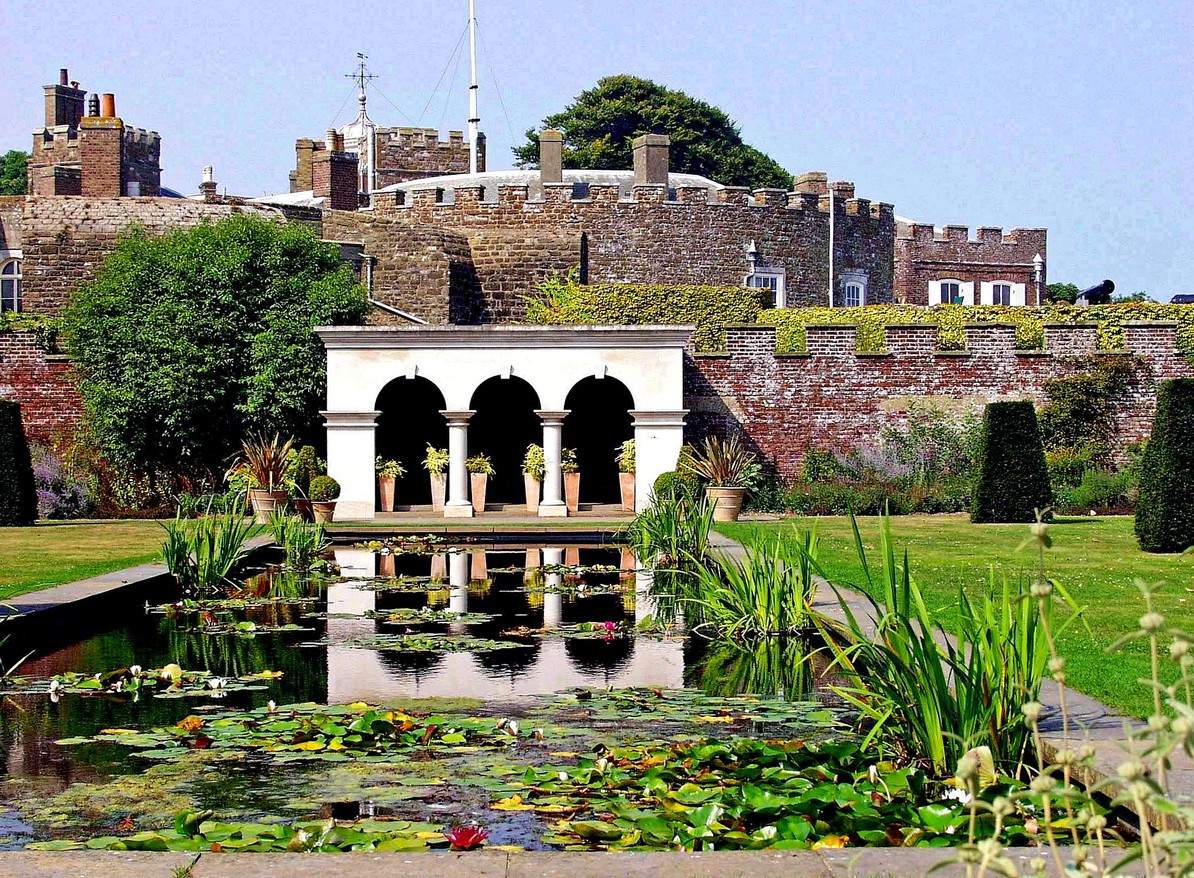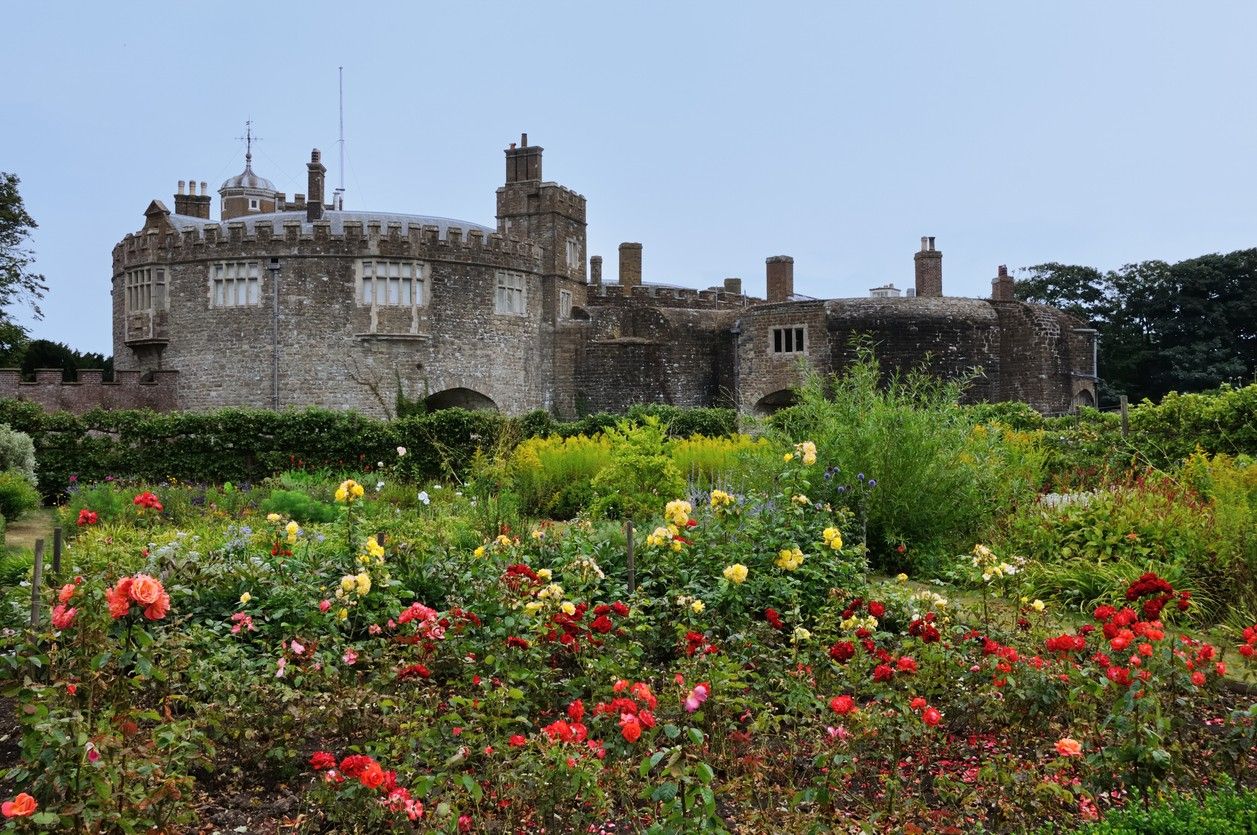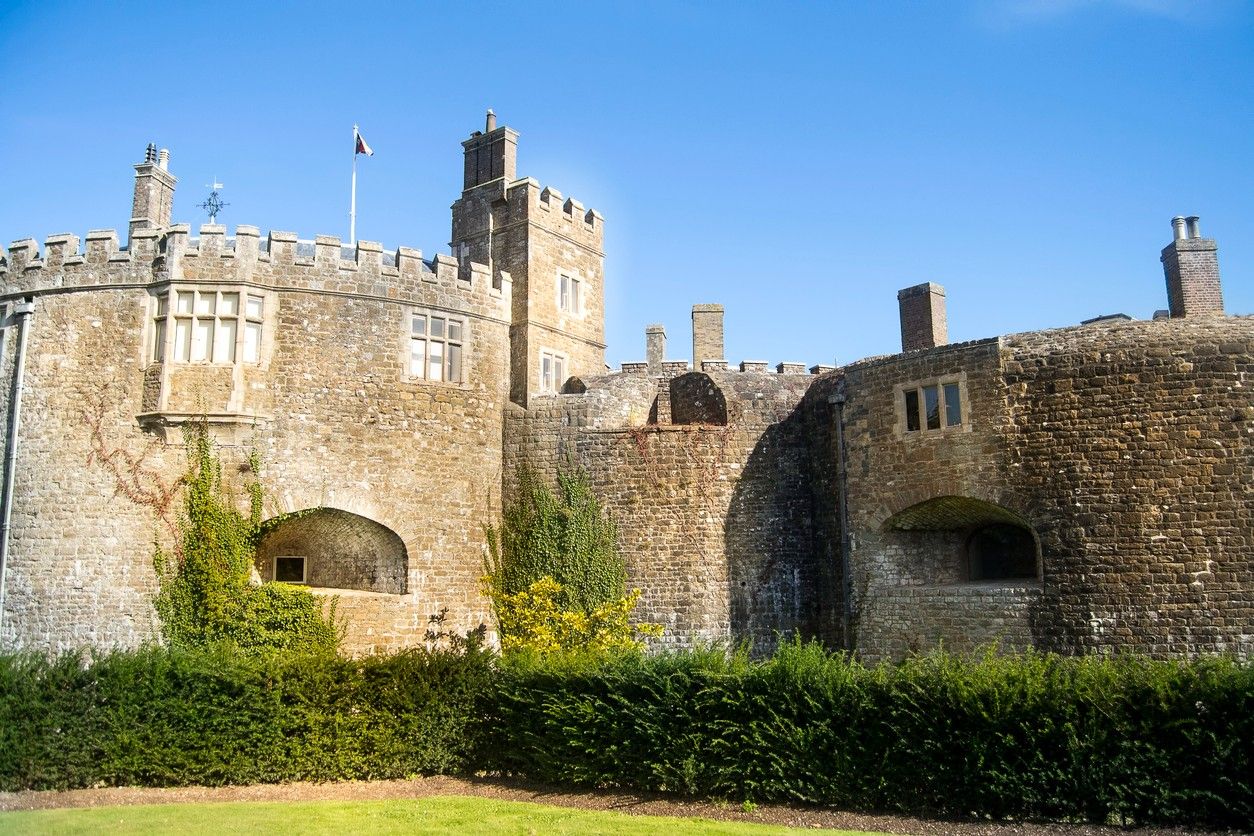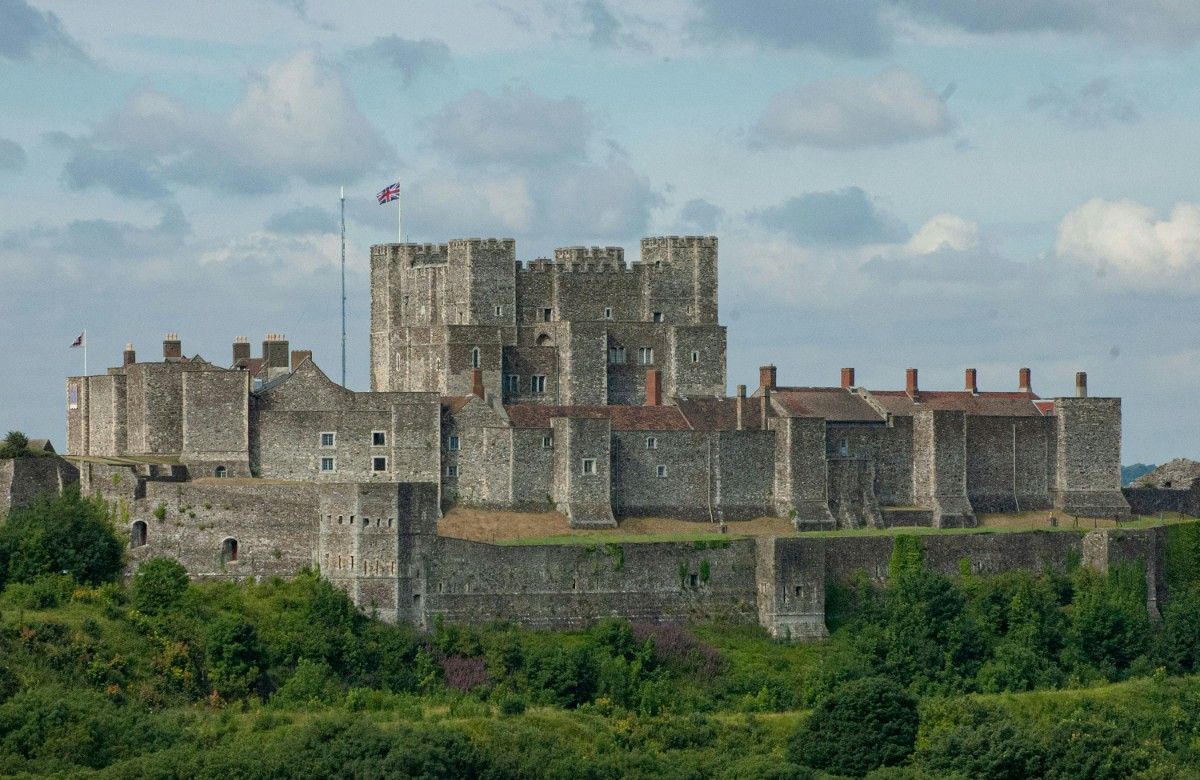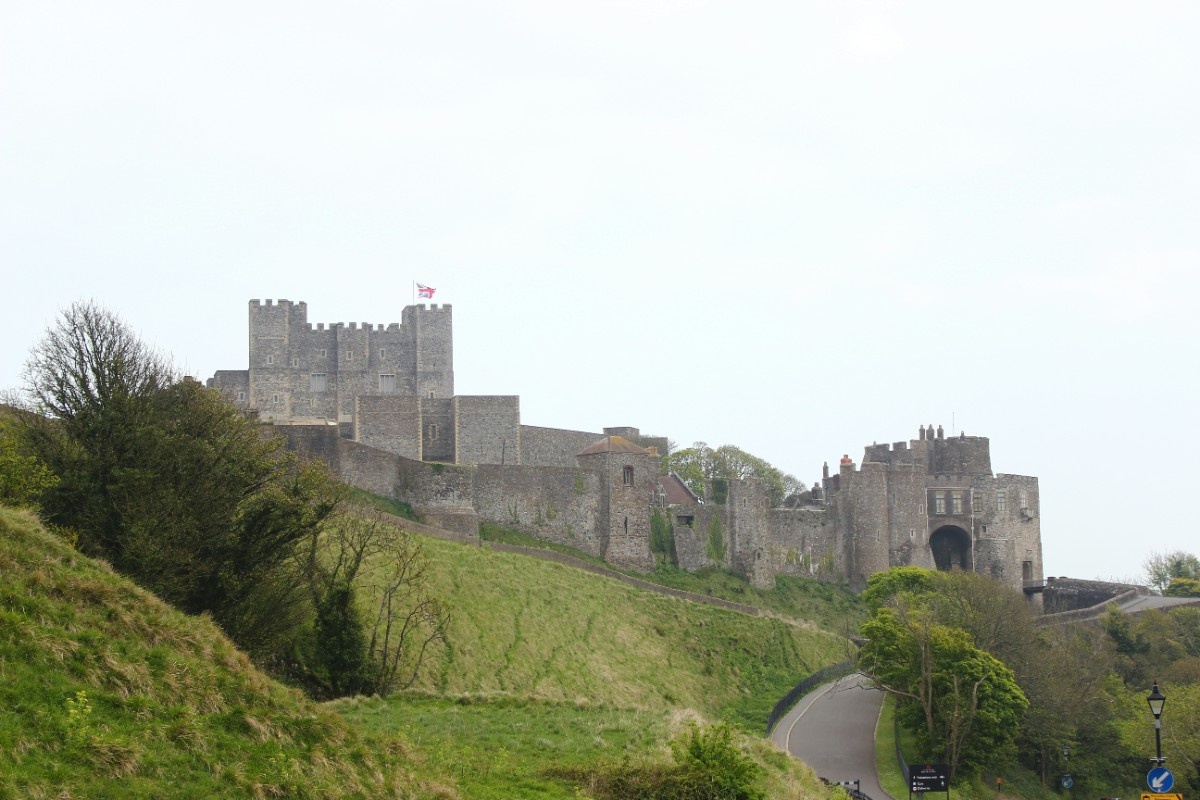History of Walmer Castle
Walmer Castle, a fascinating and historically significant fortress, boasts a rich history that spans several centuries. The castle's origins date back to the 16th century when King Henry VIII ordered the construction of a chain of coastal defences to protect England from the threat of invasion by France and the Holy Roman Empire. Walmer Castle, along with its neighbouring fortifications, Deal Castle and Sandown Castle, formed a vital part of this defensive line along the Kent coast. Construction of Walmer Castle began in 1539 and was completed in 1540. The original design was that of a concentric artillery fort, featuring a central keep surrounded by four circular bastions connected by curtain walls. This innovative layout allowed for effective defence against both land and sea attacks. The castle was initially garrisoned by a captain and a small contingent of men tasked with maintaining and defending the fortification.
Over the centuries, Walmer Castle underwent numerous modifications and expansions to adapt to changing military needs and technological advancements. In 1708, the castle took on a new role when the Duke of Dorset, appointed as the Lord Warden of the Cinque Ports, chose Walmer Castle as his official residence. The Duke initiated extensive renovations to transform the military fortress into an elegant stately home befitting a nobleman of his stature. This marked a significant shift in the castle's purpose, as it began to serve both defensive and residential functions. Subsequent Lords Warden, including notable figures such as William Pitt the Younger and Arthur Wellesley, the 1st Duke of Wellington, continued to use Walmer Castle as their official residence. Each left their mark on the property through various improvements and additions. The Duke of Wellington, in particular, had a strong affinity for the castle, spending considerable time there throughout his tenure as Lord Warden. It was at Walmer Castle where Wellington ultimately passed away in 1852, sitting in his favourite armchair. Today, visitors can view the Duke's room and the famous armchair as part of the castle's museum collection. During the First World War, Walmer Castle served as a naval hospital, providing care for wounded soldiers. Following the war, the castle was transferred to the care of English Heritage, who opened it to the public, allowing visitors to explore and appreciate its rich history.
Visitors can explore the castle's interior, which showcases a blend of original 18th-century Georgian style and later 19th-century furnishings and decor. Highlights include the Wellington Room, the elegant reception rooms, and the grand staircase added by William Pitt the Younger. The castle's museum offers a fascinating glimpse into the lives of its former residents, displaying personal artefacts, paintings, and informative exhibits that bring the castle's history to life. From its origins as a coastal fortress to its transformation into a stately residence, Walmer Castle has played a significant role in England's history, and its walls continue to tell the stories of those who have shaped its legacy.
Exploring the Walmer Castle Grounds
The Broadwalk
One of the most striking and memorable features of Walmer Castle's gardens is the magnificent Broadwalk. This 100-meter-long avenue was laid out in 1865 by Earl Granville and forms a dramatic central axis connecting the castle to the far reaches of the grounds. The Broadwalk is lined on either side by immaculately trimmed yew hedges, their geometric green borders creating a visually stunning frame for the path. Enhancing the Broadwalk's grandeur are rows of standard roses and colorful ribbon flower borders which add vibrant pops of color against the dark green yews. The flowers are replanted seasonally, ensuring a continuous display from spring through fall. In springtime, the borders burst with tulips, daffodils and forget-me-nots. Summer brings forth fragrant roses, lavender, and brilliantly hued annuals. As autumn arrives, dahlias, chrysanthemums and asters keep the Broadwalk in bloom.
The Broadwalk leads to a terraced lawn originally used for croquet and tennis in the castle's heyday as a country retreat for the Lord Warden. Today, the lawn offers a peaceful spot to relax, have a picnic, and take in views back towards the castle rising majestically beyond the moat. The contrast between the castle's martial exterior and the elegance of the Broadwalk gardens is particularly striking from this vantage point. The Broadwalk is at its most breathtaking in the late afternoon as the setting sun casts a golden glow, elongating the shadows of the yew hedges across the lawn. It's the perfect time for a stroll, the air perfumed by flowers and the buzzing of bees replaced by birdsong in the cooling air. No matter the season, the Broadwalk remains the backbone of Walmer Castle's gardens, a timeless and tranquil place that has offered respite to visitors for over 150 years.
The Queen Mother's Garden
The Queen Mother's Garden is a hidden gem within Walmer Castle's grounds, a contemporary addition that brings a touch of modernity to the historic estate. Created in 1997 to celebrate the 95th birthday of Queen Elizabeth the Queen Mother, this elegant formal garden was designed by the renowned Penelope Hobhouse. Hobhouse transformed what was once a utilitarian Victorian walled garden into a stylish and tranquil oasis. The garden is laid out around a central pool flanked by clipped box hedging and neat gravel paths. The planting scheme features predominantly white, green and purple blooms which create a soothing and harmonious atmosphere. Alliums, agapanthus, and tulips provide height and drama while low-growing lavender, catmint and lambs' ears soften the borders.
At either end of the garden, two unique structures add a playful touch. A charming summerhouse provides a shady spot to sit and enjoy the peaceful ambience, while opposite stands the quirky "yew castle," a raised arbour that mimics the crenellations of the castle's battlements. The walls of the garden are clothed in espaliered pear trees and climbing roses, adding another layer of interest. The Queen Mother's Garden is a masterclass in combining crisp structure with soft, billowing planting to create a space that feels both contemporary and timeless. It's a perfect spot for quiet contemplation, a secluded corner to escape the bustle of the world beyond the castle walls. The garden is at its most enchanting in early summer when the alliums are in full bloom, their spherical purple flowers bobbing gently in the breeze above a sea of greenery. This hidden treasure is a testament to the enduring love of gardening that has shaped Walmer Castle's landscape over the centuries.
The Oval Lawn
Nestled within Walmer Castle's expansive grounds, the Oval Lawn is a delightful feature that adds a touch of whimsy and romance to the estate's gardens. As its name suggests, this area is defined by a large, perfectly oval-shaped lawn bordered by a gravel path and lush plantings. The Oval Lawn's origins date back to the 19th century when the castle served as a beloved country retreat for the Lord's Warden of the Cinque Ports. The lawn was used for leisurely pursuits such as croquet and garden parties, with the surrounding gardens providing a picturesque backdrop for socialising and relaxation. Today, the Oval Lawn remains a popular spot for visitors to Walmer Castle. The meticulously maintained grass is an inviting place for a picnic or simply to bask in the sun on a warm day. Children delight in rolling down the gentle slopes or playing games on the expansive stretch of green.
Encircling the lawn is a colourful array of shrubs, perennials, and annuals that change with the seasons. In spring, the borders are awash with the cheerful hues of daffodils, tulips, and forget-me-nots. As summer arrives, the planting transitions to a palette of pinks, purples, and whites, with roses, lavender, and cosmos taking centre stage. Autumn brings forth a tapestry of warm golds, oranges, and reds as the leaves on the surrounding trees turn and asters and chrysanthemums bloom. The Oval Lawn is also a haven for wildlife. The flowers attract a variety of pollinators, from bumblebees to butterflies, while the mature trees bordering the lawn provide habitat for birds and small mammals. It's not uncommon to spot a cheeky squirrel scampering across the grass or hear the melodious song of a robin from the branches above. With its gently curving lines and lush, colourful plantings, the Oval Lawn is a charming and restful corner of Walmer Castle's gardens. It's a place to slow down, breathe in the fresh air, and appreciate the simple beauty of nature. Whether enjoyed as a quiet retreat or a spot for family fun, this enchanting space is sure to leave a lasting impression on all who visit.
The Victorian Kitchen Garden
Stepping into Walmer Castle's Victorian Kitchen Garden is like taking a journey back in time. This meticulously restored walled garden offers a fascinating glimpse into the practical side of 19th-century estate life when kitchen gardens played a vital role in supplying fresh produce to the castle's residents and guests. The garden's layout is typical of the era, with neat rows of vegetables, fruits, and herbs arranged in geometric patterns. The beds are edged with box hedging and intersected by gravel paths, creating a pleasing sense of order and structure. Espalier fruit trees line the walls, their branches trained into intricate patterns to maximise productivity in the limited space. Throughout the growing season, the kitchen garden is a hive of activity. The castle's gardeners can be seen tending to the crops, using traditional tools and techniques passed down through generations. They nurture an impressive array of produce, from crisp lettuce and plump tomatoes to sweet peas and fragrant herbs. The garden's bounty is harvested daily, ensuring a steady supply of fresh, flavorful ingredients for the castle's kitchens.
One of the highlights of the Victorian Kitchen Garden is the beautifully restored greenhouse. This glass and cast-iron structure houses tender crops like cucumbers, melons, and exotic fruits that require protection from the elements. The greenhouse also propagates young plants and nurtures seedlings before they are transplanted into the garden beds. Visitors to the kitchen garden can marvel at the ingenuity and skill of the Victorian gardeners who created such productive and beautiful spaces. Informative displays and interpretation panels provide insights into the techniques used to maximise yields, control pests, and extend the growing season. The garden also hosts regular demonstrations and workshops where visitors can learn about traditional gardening methods and even try their hand at planting and harvesting. Beyond its practical purpose, the Victorian Kitchen Garden is a testament to the enduring appeal of growing one's food. The satisfaction of plucking a ripe apple from a tree or pulling up a bunch of fragrant carrots is timeless. In an age of supermarkets and fast food, this garden serves as a reminder of the simple pleasures and rewards of nurturing the earth and reaping its bounty. It's a living connection to Walmer Castle's past and a source of inspiration for gardeners and food lovers today.
Statues, Monuments, and Follies
Scattered throughout Walmer Castle's expansive grounds, a delightful array of statues, monuments, and follies add whimsy, intrigue, and historical interest to the estate's already enchanting landscape. One of the most notable of these features is the Lord Warden's Well, a charming Gothic-style wellhead located near the castle's entrance. Dating back to the 19th century, this ornate structure was once the primary source of water for the castle's residents. The well is adorned with intricate carvings and a conical roof, its design a playful nod to the medieval past. Today, the Lord Warden's Well stands as a reminder of the practical necessities of castle life and the ingenuity of those who lived and worked on the estate.
Further into the grounds, visitors will encounter the Admiral's Seat, a sheltered viewpoint that offers stunning panoramic views over the English Channel. This stone structure was built in the early 20th century and named in honour of the many Lords Warden who served as admirals in the Royal Navy. From this vantage point, one can imagine the castle's strategic importance in defending the coast and the sense of pride and duty felt by those entrusted with its care. Perhaps the most intriguing of Walmer Castle's follies is the ha-ha, a hidden ditch that runs along the boundary of the formal gardens. Ha-has were a common feature of 18th-century landscape design, used to keep grazing livestock out of the gardens without interrupting the view with unsightly fences. The ha-ha at Walmer Castle is a testament to the skill and creativity of the estate's gardeners, who used this clever device to create a seamless transition between the manicured lawns and the pastoral landscape beyond. Visitors will encounter various statues and sculptures throughout the gardens, each with its own story to tell. A bronze figure of a gardener, spade in hand, pays tribute to the countless men and women who have tended the castle.
The Surrounding Area of Walmer Castle
Walmer Beach and Promenade
Walmer Beach and its picturesque promenade offer a delightful seaside experience just steps from the impressive grounds of Walmer Castle. This pebble beach stretches along the coast, providing a peaceful and scenic spot for a leisurely walk or a refreshing swim in the sea. The beach is particularly fascinating at low tide when the receding waters reveal the fossilised remains of an ancient forest, offering a glimpse into the area's geological past. Visitors can explore these intriguing remnants, which serve as a reminder of the ever-changing nature of the coastline.
The promenade, which runs parallel to the beach, extends for approximately one mile and is lined with charming benches, well-maintained gardens, and the popular Walmer Paddling Pool. This shallow pool is a favourite among families during the summer months, providing a safe and enjoyable space for children to splash and play. The promenade is also a fantastic spot for taking in the stunning views of the sea and the iconic Walmer Castle. As visitors stroll along the path, they can admire the castle's impressive fortifications and imagine the many historical figures who have walked these same steps, including the Duke of Wellington and Queen Elizabeth the Queen Mother.
Along the promenade, visitors will encounter several points of interest, such as the Walmer Lifeboat Station. This historic building, which dates back to the 19th century, houses the local lifeboat and serves as a testament to the bravery of the volunteers who have dedicated themselves to saving lives at sea. The beach and promenade are also home to a variety of wildlife, including various species of seabirds and the occasional seal. Birdwatchers will delight in the opportunity to spot oystercatchers, turnstones, and other coastal birds as they forage along the shoreline. Walmer Beach is also steeped in history. It is believed to be the landing place of Julius Caesar and the Roman fleet during their invasion of Britain in 55 BC. This significant event is commemorated by a plaque along the promenade, offering visitors a tangible connection to the area's ancient past.
Walmer Town
Walmer, the charming seaside town that lies in the shadow of the magnificent Walmer Castle, is a destination that seamlessly blends rich history with a vibrant contemporary atmosphere. This quaint town offers visitors a chance to step back in time while enjoying all the amenities and attractions of a modern coastal community. At the heart of Walmer lies its picturesque high street, lined with an array of independent shops, cafes, pubs, and restaurants. These establishments are housed within beautiful Victorian and Georgian buildings, their facades a testament to the town's architectural heritage. Visitors can spend hours exploring the unique offerings of these local businesses, from artisanal crafts and gifts to delectable homemade treats.
One of the highlights of Walmer's shopping scene is the weekly Farmers Market, held every Saturday. This lively event brings together the best of local produce, with stalls offering fresh fruits and vegetables, artisanal cheeses, organic meats, and handmade baked goods. The market is also a great place to meet and interact with friendly locals, who are passionate about their community and eager to share their knowledge with visitors. For those seeking a more immersive historical experience, a visit to the charming Westgate Bookshop is a must. This independent bookstore is housed within a beautiful period building and offers an extensive collection of books, including many rare and antique volumes. Browsing the shelves of this atmospheric shop is like taking a journey through Walmer's literary past. No visit to Walmer would be complete without sampling some of the town's culinary delights. Mrs Knott's Tea Room is a local institution, serving traditional afternoon tea in a cosy, vintage-inspired setting. For a heartier meal, the Thompson's Bell pub offers a menu of classic British dishes, all made with locally sourced ingredients and served in a warm, welcoming atmosphere.
Walmer's rich history is evident not only in its architecture but also in its many cultural attractions. The Deal Maritime and Local History Museum, located just a short walk from the town centre, offers a fascinating glimpse into the area's seafaring past. The museum's exhibits showcase the town's long-standing connection to the sea, from its days as a major fishing port to its role in defending the coast during times of war. For those seeking a more active experience, Walmer is surrounded by stunning natural beauty that begs to be explored. The town is situated on the edge of the Kent Downs Area of Outstanding Natural Beauty, which offers miles of scenic walking and cycling trails through rolling hills and picturesque countryside. The nearby White Cliffs of Dover are also a must-see, their striking white chalk faces are a symbol of Britain's resilience and beauty. With its perfect blend of history, culture, and natural beauty, Walmer is a town that truly offers something for everyone. Whether you're a history buff, a foodie, or an outdoor enthusiast, this charming seaside community is sure to captivate and delight. As you explore its winding streets and soak up its unique atmosphere, you'll quickly understand why Walmer has been a beloved destination for centuries.
Deal and Its Attractions
Just a short distance north of Walmer lies the enchanting town of Deal, a historic seaside destination that boasts a wealth of attractions and activities for visitors to enjoy. With its well-preserved Georgian architecture, vibrant arts and music scene, and stunning coastal setting, Deal is a must-visit for anyone exploring the Kent coast. One of the town's most iconic landmarks is the Deal Pier, a striking structure that extends over 1,000 feet into the sea. Built in the 1950s, the pier offers stunning views of the coastline and is a popular spot for fishing, walking, and simply taking in the fresh sea air. Visitors can also enjoy a meal or a drink at the pier's restaurant, which offers a menu of locally caught seafood and traditional British dishes.
Deal is also home to many fascinating historical sites, including Deal Castle, another of Henry VIII's coastal fortifications. Built in the 16th century to defend against French invasion, the castle is a testament to the town's long-standing strategic importance. Visitors can explore the castle's winding tunnels, climb to the top of its battlements for breathtaking views of the sea, and learn about its rich history through interactive exhibits and guided tours. For those interested in the town's maritime heritage, a visit to the Deal Maritime and Local History Museum is a must. Housed within a former naval drill hall, the museum offers a fascinating glimpse into Deal's past as a major naval base and its long-standing connection to the sea. Exhibits showcase a wide range of artefacts, from model ships and naval uniforms to photographs and personal accounts of life on the high seas.
Deal is also renowned for its thriving arts and music scene, with several galleries, studios, and performance venues scattered throughout the town. The Astor Theatre is a particular highlight, hosting a diverse program of plays, concerts, and comedy shows throughout the year. The town also boasts a lively schedule of festivals and events, including the Deal Music and Arts Festival, which brings world-class performers to the town each summer. For those who love to shop, Deal's High Street is a treasure trove of independent boutiques, antique shops, and speciality stores. Visitors can spend hours browsing the unique offerings of these local businesses, from handcrafted jewellery and vintage clothing to artisanal food and drink. The town is also home to many excellent restaurants and cafes, serving everything from traditional fish and chips to gourmet cuisine, Of course, no visit to Deal would be complete without a stroll along the town's picturesque seafront. The pebble beach is a lovely spot for a walk or a picnic, with stunning views of the sea and the iconic Deal Pier. The seafront is also home to several charming beach huts, many of which have been beautifully decorated by local artists and are available for rent.
Other Notable Historic Sites
The area surrounding Walmer Castle is steeped in history, with a wealth of fascinating historic sites to explore. From ancient Roman ruins to iconic medieval fortresses, these landmarks offer a glimpse into the rich and varied past of this beautiful region. One of the most impressive historic sites in the area is Dover Castle, a sprawling medieval fortress that has played a key role in England's defence for over nine centuries. Perched atop the iconic White Cliffs of Dover, the castle offers stunning views of the English Channel and the French coast beyond. Visitors can explore the castle's extensive grounds, including the Great Tower, the Underground Hospital, and the Secret Wartime Tunnels, which played a crucial role in the evacuation of Dunkirk during World War II.
Another must-visit historic site in the area is the Roman Painted House in Dover. This unique archaeological site features the remains of a Roman villa that dates back to the 2nd century AD. The villa's walls are adorned with stunning frescoes and murals, offering a rare glimpse into the art and culture of ancient Rome. Visitors can explore the site's interactive exhibits and learn about the daily life of the villa's inhabitants. The Battle of Britain Memorial at Capel-le-Ferne is a moving tribute to the brave pilots who defended Britain during World War II. The memorial features a stunning sculpture of a pilot, as well as a wall of names honouring those who fought in the Battle of Britain. Visitors can also explore the memorial's interactive exhibits, which offer a fascinating insight into the history of the battle and the experiences of those who fought in it.
Another historic site that is well worth a visit is St. Augustine's Abbey in Canterbury. Founded in the 6th century by St. Augustine, who was sent to England by Pope Gregory the Great to convert the Anglo-Saxons to Christianity, the abbey played a crucial role in the spread of Christianity throughout England. Today, visitors can explore the abbey's extensive ruins, including the remains of the church, cloister, and chapter house, and learn about the lives of the monks who once lived and worshipped there, For those interested in the area's maritime history, the Deal Maritime and Local History Museum is a must-visit. Housed within a former naval drill hall, the museum offers a fascinating glimpse into Deal's past as a major naval base and its long-standing connection to the sea. Exhibits showcase a wide range of artefacts, from model ships and naval uniforms to photographs and personal accounts of life on the high seas. Finally, no exploration of the area's historic sites would be complete without a visit to the iconic Canterbury Cathedral. This stunning medieval church has been a place of worship for over 1,400 years and is one of the most important pilgrimage sites in Europe. Visitors can explore the cathedral's breathtaking architecture, including its soaring Gothic nave and intricate stained glass windows, and learn about its rich history and spiritual significance.
Visiting Walmer Castle and Gardens
Opening Times — If you're planning a visit to Walmer Castle and Gardens, there are a few key things to know to make the most of your experience. The castle is open to the public from spring through fall, typically from late March to late October. During the winter months, the castle is closed but the gardens remain open on weekends.
Accessibility — When visiting Walmer Castle, it's important to note that some areas of the property may have limited accessibility for those with mobility issues. The castle has uneven floors and narrow staircases, and not all areas are wheelchair accessible. The gardens, however, have mostly level gravel paths that are easier to navigate.
Getting There — To reach Walmer Castle, the easiest option is by car. The castle is located just off the A258 and there is a large car park on site. For those travelling by public transport, the nearest train station is Walmer, which is about a mile from the castle. There are also regular buses from Deal and Dover that stop near the castle entrance.
Guided Tours and Audio Guides — When planning your visit, it's a good idea to allow at least 2-3 hours to fully explore the castle interiors and gardens. Guided tours of the castle are available on certain days and offer a more in-depth look at the property's history and architecture. Audio guides are also available for a self-guided tour.
On-Site Amenities — In addition to the main castle rooms and exhibits, there are some other attractions and amenities on site. The Walmer Castle Tea Room serves light lunches, snacks, and cream teas, and is a lovely spot to refuel during your visit. The gift shop offers a range of souvenirs, books, and locally made crafts.
Related Articles

Let us know you agree to cookies
We use marketing, analytical and functional cookies as well as similar technologies to give you the best experience. Third parties, including social media platforms, often place tracking cookies on our site to show you personalised adverts outside of our website.
We store your cookie preferences for two years and you can edit your preferences via ‘manage cookies’ or through the cookie policy at the bottom of every page. For more information, please see our cookie policy.
